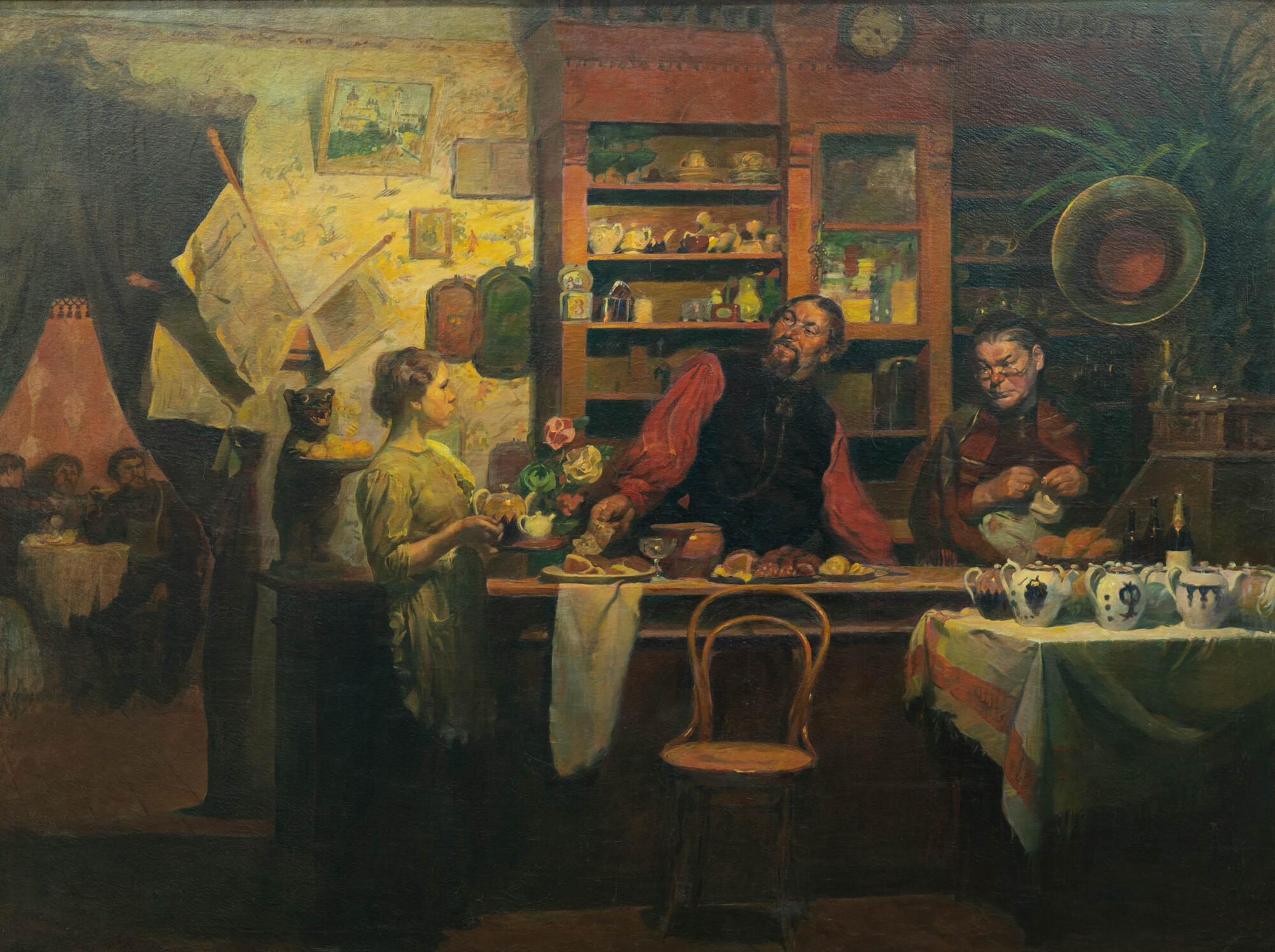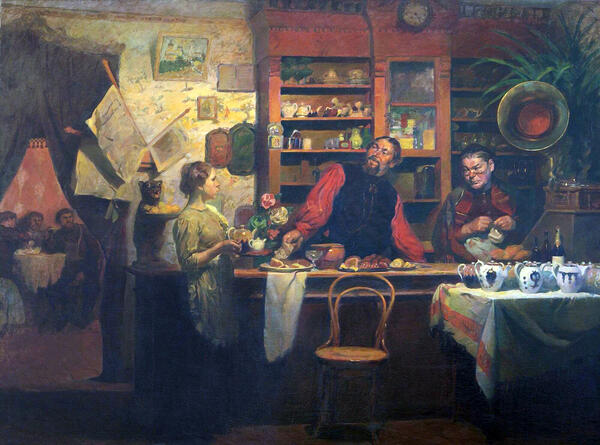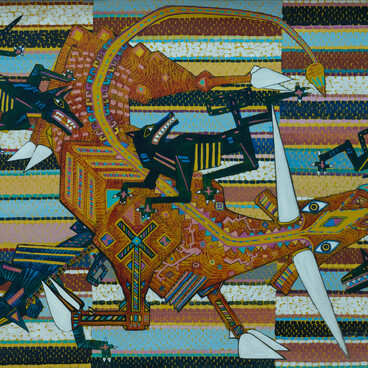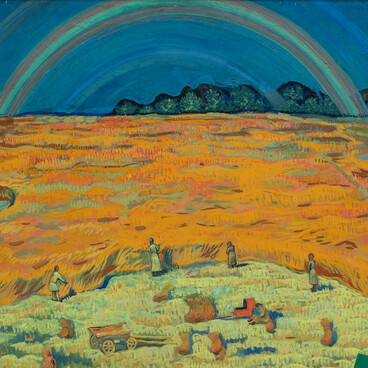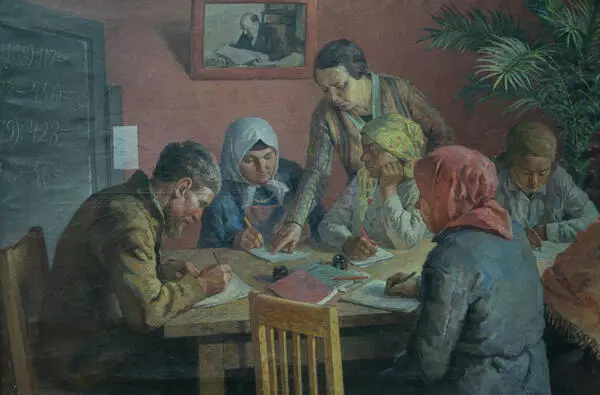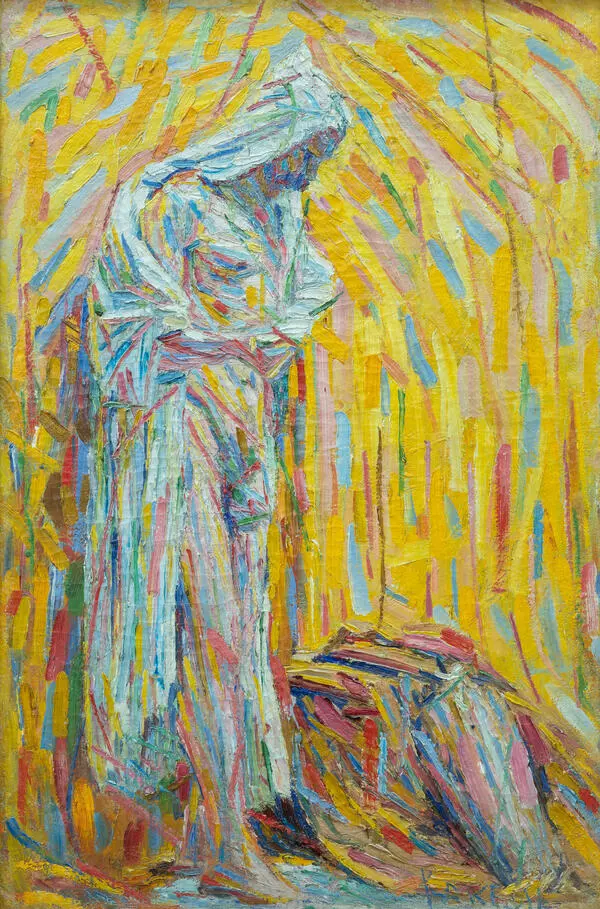Alexey Afanasyevich Kokel was born in 1880 in the village of Tarkhany of the Russian Empire into a poor Chuvash peasant family. As a child, he contracted bone tuberculosis. Due to his illness, Alexey Kokel was bedridden for about eight years, which gave him a lot of time to do what he loved — draw. From the artist’s memoirs,
In a Tea Room
Creation period
1912
Place of сreation
Saint Petersburg, the Russian Empire
Dimensions
184x245 cm
Technique
canvas, oil
Collection
Exhibition
3
Open in app#2
#7
…As soon as I was handed a pencil, a slate pencil and a slate board at school, I started drawing poultry and animals. <…> At night, when I was home, I fondly and diligently copied all the few illustrations I could find in various books in our small school library.
#8
Alexey Kokel’s painting “In a Tea Room” was his graduation work at the Imperial Academy of Arts. The first sketches for it were approved in 1910. The artist worked on the project under the supervision of Dmitry Nikolayevich Kardovsky. At the graduation exhibition at the Academy in 1912, Ilya Repin bestowed high praise on the painting,
#9
This year, both the competition itself and the works of the workshop students seem to be slothful and inert. The only work that imprinted on my mind is the “Tea Room” (painted by A. Kokel), it has originality and a distinct style.
#10
In 1913, the painting was exhibited at the 11th Secession International Exhibition in Munich — the biggest center of European art back then — and also gained critical acclaim.
In his work, Kokel faces difficult artistic challenges: on the one hand, he embodies the ideals of the Wanderers by detailing his characters both socially and psychologically and conveying the spirit of the times through household items. While on the other hand, he uses principles and techniques of impressionism to achieve the necessary expressive coloring that shows the way people perceived the world during a social crisis.
In one of his early graphic sketches, the artist depicted the interior of a tavern with four characters: in addition to the hostess at the counter, the innkeeper with a banknote in his hand, and the waitress, Kokel also showed a customer sitting at a table in front of the counter. In the final version, only a brightly lit chair with a curved back remained, as if indicating that someone was just there, talking to the owners. The money the man extends is not a wage or a tip, but a form of coercion, a payment for a completely different kind of services.
The painting vividly shows the corrupt Russia and the things the society stooped to in the times of a social crisis, that occurred after the first Russian revolution had been quashed on the eve of the imperialist war.
In his work, Kokel faces difficult artistic challenges: on the one hand, he embodies the ideals of the Wanderers by detailing his characters both socially and psychologically and conveying the spirit of the times through household items. While on the other hand, he uses principles and techniques of impressionism to achieve the necessary expressive coloring that shows the way people perceived the world during a social crisis.
In one of his early graphic sketches, the artist depicted the interior of a tavern with four characters: in addition to the hostess at the counter, the innkeeper with a banknote in his hand, and the waitress, Kokel also showed a customer sitting at a table in front of the counter. In the final version, only a brightly lit chair with a curved back remained, as if indicating that someone was just there, talking to the owners. The money the man extends is not a wage or a tip, but a form of coercion, a payment for a completely different kind of services.
The painting vividly shows the corrupt Russia and the things the society stooped to in the times of a social crisis, that occurred after the first Russian revolution had been quashed on the eve of the imperialist war.
#11
Ministry of Culture of the Russian Federation
read morehide
00:00
00:00
1x
In a Tea Room
Creation period
1912
Place of сreation
Saint Petersburg, the Russian Empire
Dimensions
184x245 cm
Technique
canvas, oil
Collection
Exhibition
3
Open in app
Share
